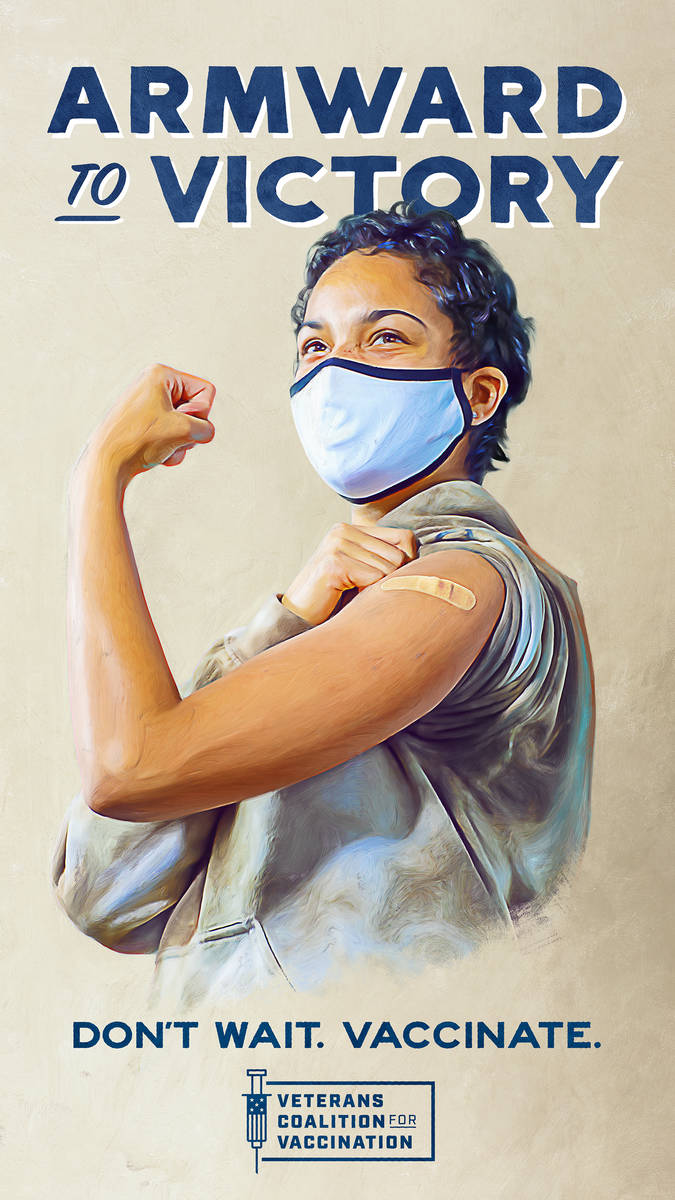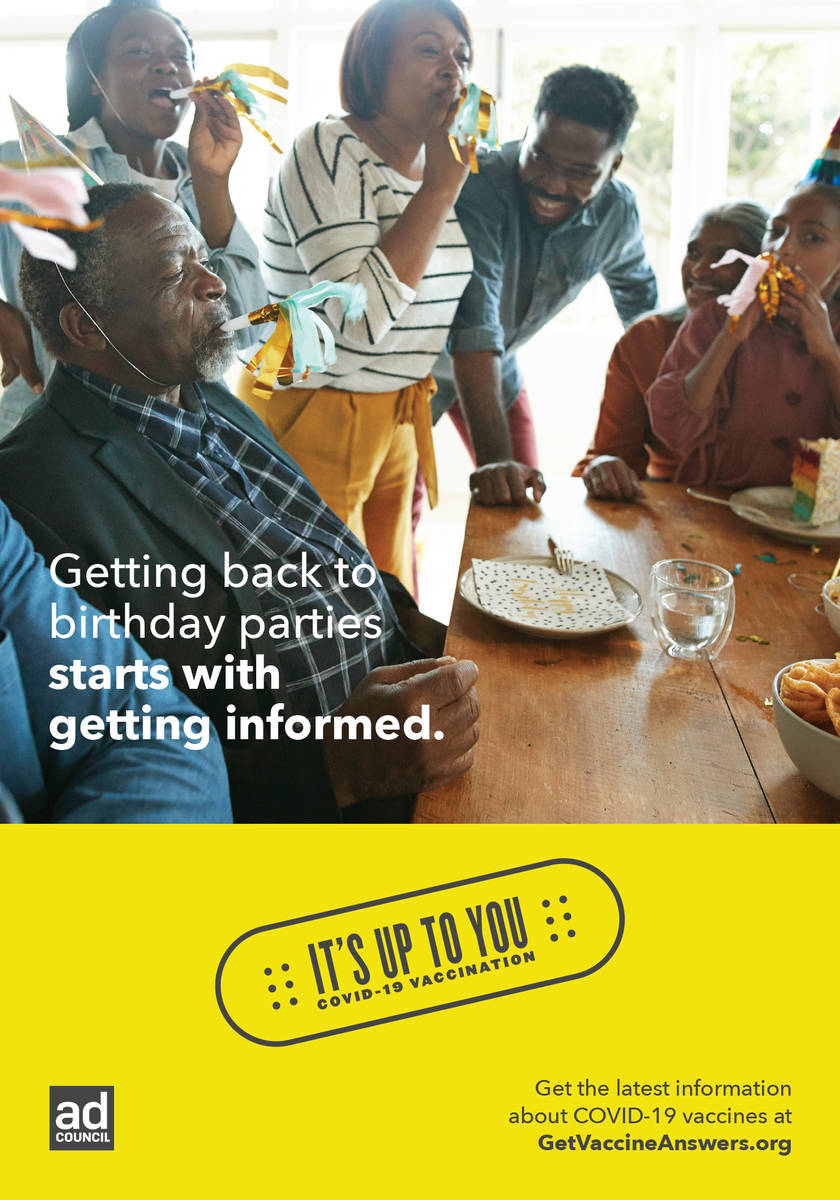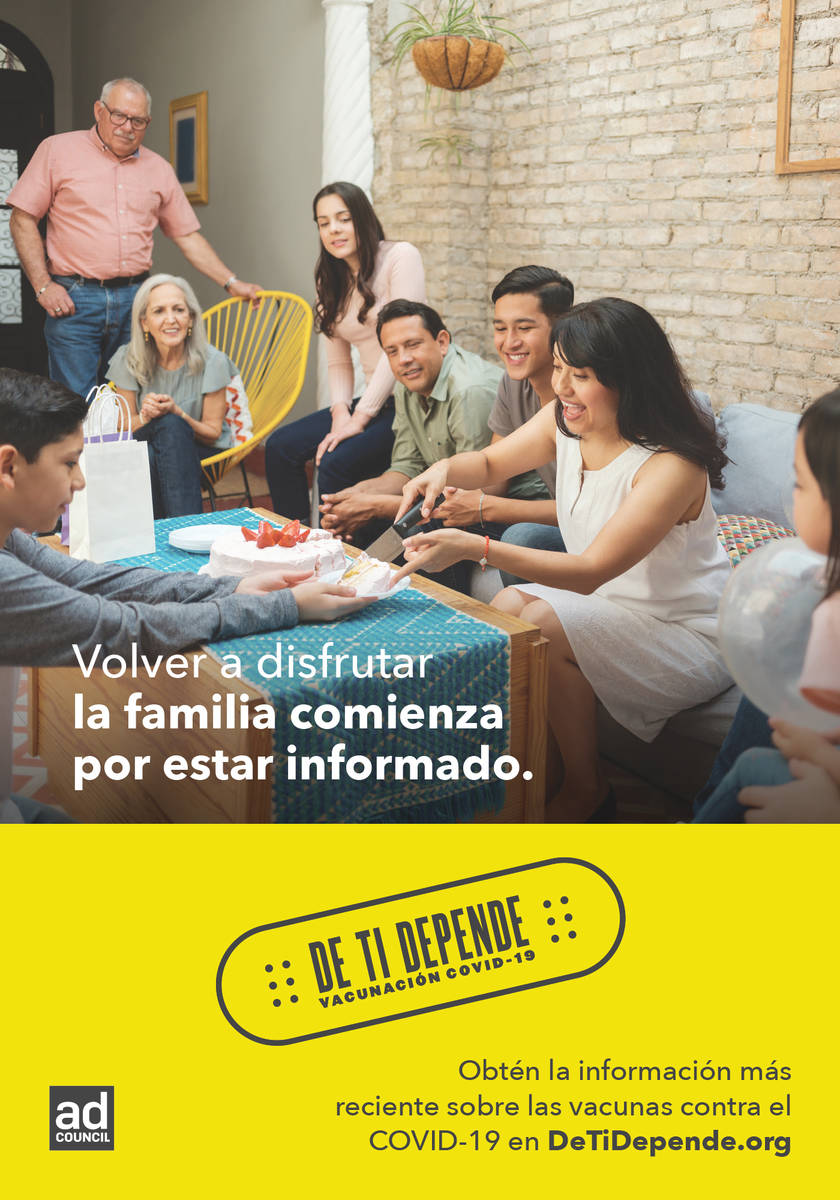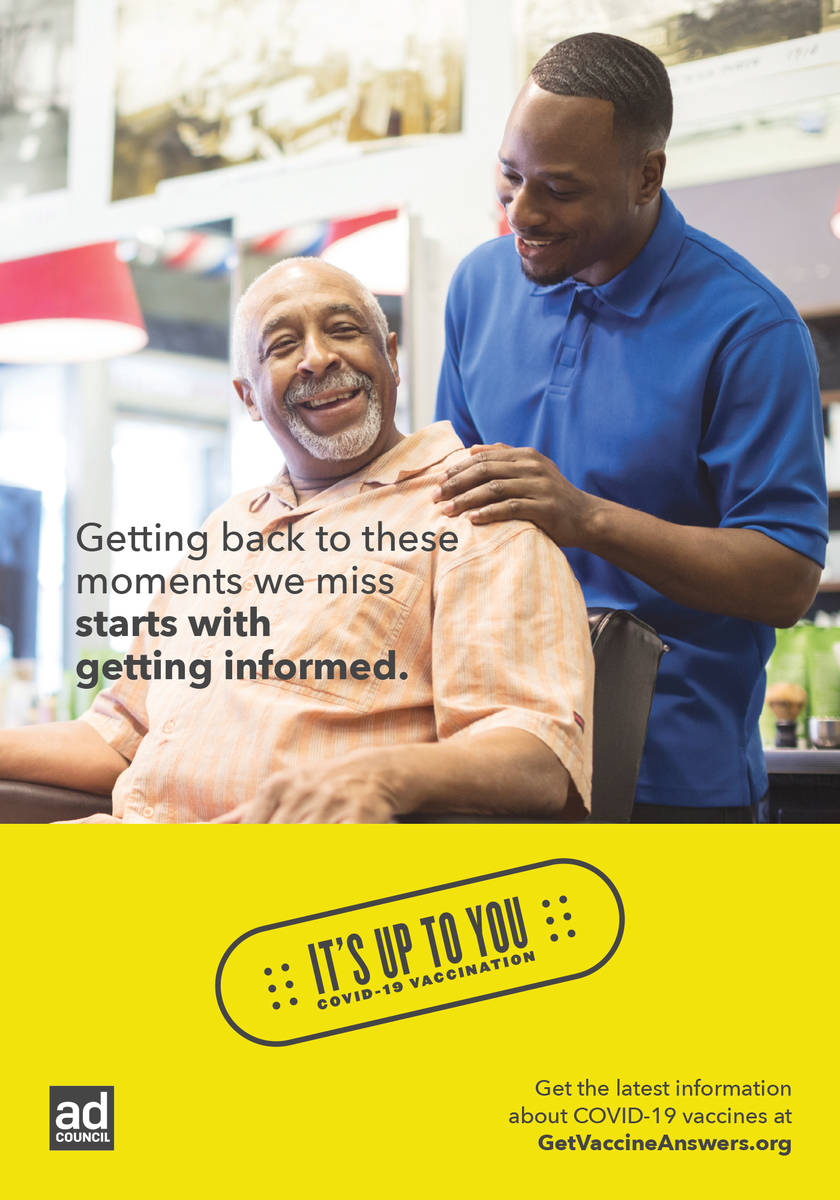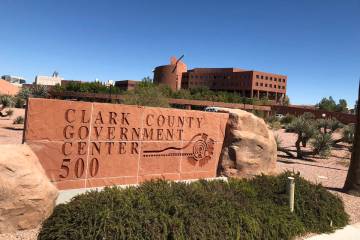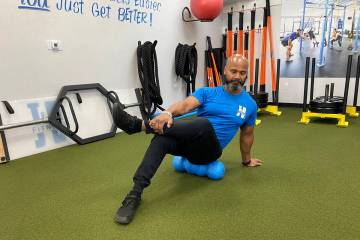Selling the COVID-19 vaccine to skeptical consumers
After a yearlong wait, vaccines for COVID-19 finally are available, and most Americans’ biggest concern right now is getting vaccinated as quickly as they can.
But as with any new product, not everybody is buying. Surveys say at least 20 percent of Americans — some polls put the number even higher — say they don’t plan to get vaccinated.
Local and national public service ad campaigns have been unveiled in an attempt to persuade vaccine-hesitant Americans to get shots. And while selling a COVID-19 vaccine to skeptical Americans isn’t exactly like marketing a new car or a trip to Las Vegas, some of the same dynamics apply.
The audience
For many Americans, COVID vaccination is an easy sell. A Review-Journal/The Nevada Poll survey released this month said 73 percent of respondents either have been vaccinated with at least one shot or plan to be vaccinated, versus only 63 percent who said in October that they planned to be vaccinated.
However, 19 percent of respondents didn’t plan to be vaccinated, while 8 percent don’t know or didn’t respond. Their reasons included concern that the development of the vaccines was rushed, belief that COVID-19 is merely a stronger version of the flu, and distrust of politicians and pharmaceutical companies.
The key selling point is that vaccines, including the COVID vaccine, offer “preventive health benefits,” said Heidi Parker, executive director of Immunize Nevada, which promotes vaccinations to Nevadans. “We want people to understand that they prevent disease and why they are important, not only for themselves but (for) their community.”
The challenge
What’s now called vaccine hesitancy isn’t new, said Dr. Johan Bester, director of bioethics at the UNLV School of Medicine. “There’s always been a small but vocal anti-vaccine group of people who didn’t want vaccines or were opposed to vaccines in any form.”
For example, polio caused more than 15,000 cases of paralysis annually during the early 1950s, according to the U.S. Centers for Disease Control and Prevention. After polio vaccines were introduced in 1955 and 1963, polio cases dropped dramatically during the ’60s and ’70s.
There was “absolutely jubilation when we got the polio vaccine. There were reports that polio was done for. We could all be vaccinated. People were scared of polio and trusted public health authorities and government and companies who created the vaccine,” Bester said.
But, he added, “there also were people who didn’t want the polio vaccine.”
Nudging along public acceptance of the polio vaccine was a public service ad campaign that ran from 1958 to 1961 under the auspices of the Ad Council, the industry partnership that also created Smokey Bear and McGruff the Crime Dog.
“Initially, the country responded very slowly to the new vaccine for paralytic polio,” the council recounts on its website, and “it took an extended and repetitive advertising effort to get 80 percent of the at-risk populace fully immunized. Through April of 1960, inoculations had increased to 91.1 million, from 79 million the previous year.”
Today, because of a successful vaccination program, according to the CDC, “the United States has been polio-free since 1979.”
Different times
But that was then and this is now.
“Questions about vaccinations have become much more prominent in recent times,” Bester said. “I think the vaccine opposition have been emboldened and used things like social media to amplify their message and (offer) false information, and negative information goes viral more easily.”
Dr. Rebecca Edgeworth, an assistant professor at Touro University Nevada’s School of Physician Assistant Studies, said she has heard claims from suspicious people that the COVID vaccine targets fertility in specific groups of people and, more bizarrely, that “the vaccine contains a microchip.”
In addition, today’s media environment has “a lot of different ways we get information,” said Jason Roth, vice president of communications and partnerships for Roseman University of Health Sciences, which plans to roll out a public service vaccination campaign over the next several weeks.
During the polio epidemic, Americans received news via newspapers and a handful of TV newscasts reported by “reputable journalists who were sharing information,” Roth said. “Today, unfortunately, with social media, you can share information that’s misinterpreted or false.”
Health messages today also have become “politicized,” said Greg Chase, founder and CEO of Experience Strategy Associates, who has created COVID-related public service campaigns. “Unfortunately, I believe that everything that has been tied to COVID … has been politicized.”
Dr. Marc Kahn, dean of the UNLV School of Medicine, said the past several years also have seen “skepticism to science.
“I think that skepticism comes about from social media, where it’s difficult to determine who is really an expert. I can get a million followers (by) spewing pseudoscience and fake science.”
With so much information, both good and bad, fighting for the public’s attention and pouring in from so many sources, “you have to find a way to break through with positive, accurate information presented in a way that resonates with people,” Roth said.
Today’s message
One tack that already has appeared in vaccination public service campaigns is linking widespread vaccination to Americans’ longing to return to a normal, pre-COVID life.
The idea is “creating campaigns that focus on the positive outcomes of achieving herd immunity through vaccinations,” Roth said, and “getting back to normal and getting back to restaurants and live shows and events in the way we did before the pandemic started.”
Bester suggests an approach focusing on “how good these vaccines are, that they are the only (way) out of the pandemic, that the vaccine will stop you from getting critically ill or dying from COVID. So as soon as you get the opportunity, it’s your privilege and duty to get the vaccine.”
Another strategy would be showing that the pandemic is still with us, Chase said, and illustrating how people and communities have been affected by “job cuts, layoffs, reduction of economic status and health, along with the benefits of getting that turned around.”
Creating a strong, relatable narrative would be key to any campaign, said Rebecca Rice, an assistant professor of communication studies at UNLV who studies crisis communication, and that means asking “how do we tell good stories?”
“Data is not enough. The public wants to understand where we are in an emergency and where we’re going and what’s next.”
Targeting audiences
Some demographic groups may be particularly hard to reach. For example, surveys say vaccine hesitancy is particularly acute among members of the Latino community and — because of historical abuses by the medical community — the African-American community. Edgeworth said there also is “a lot of hesitancy in the homeless population.”
Successful vaccination campaigns likely will have to target different demographic groups — including different age groups — with more customized messaging, Edgeworth said.
“You can’t take all people … and put them into one basket. There are going to be a variety of strategies that are going to be used.”
Contact John Przybys at jprzybys@reviewjournal.com. Follow @JJPrzybys on Twitter.




